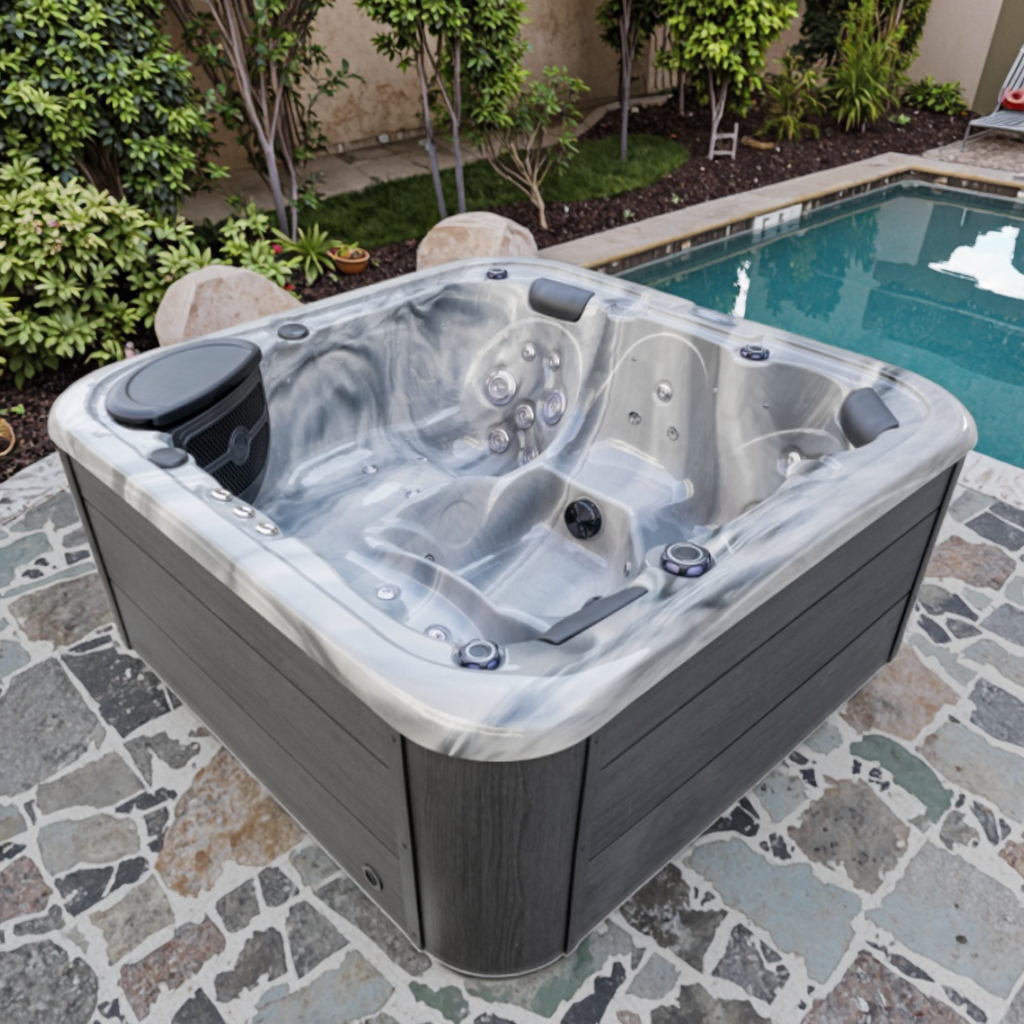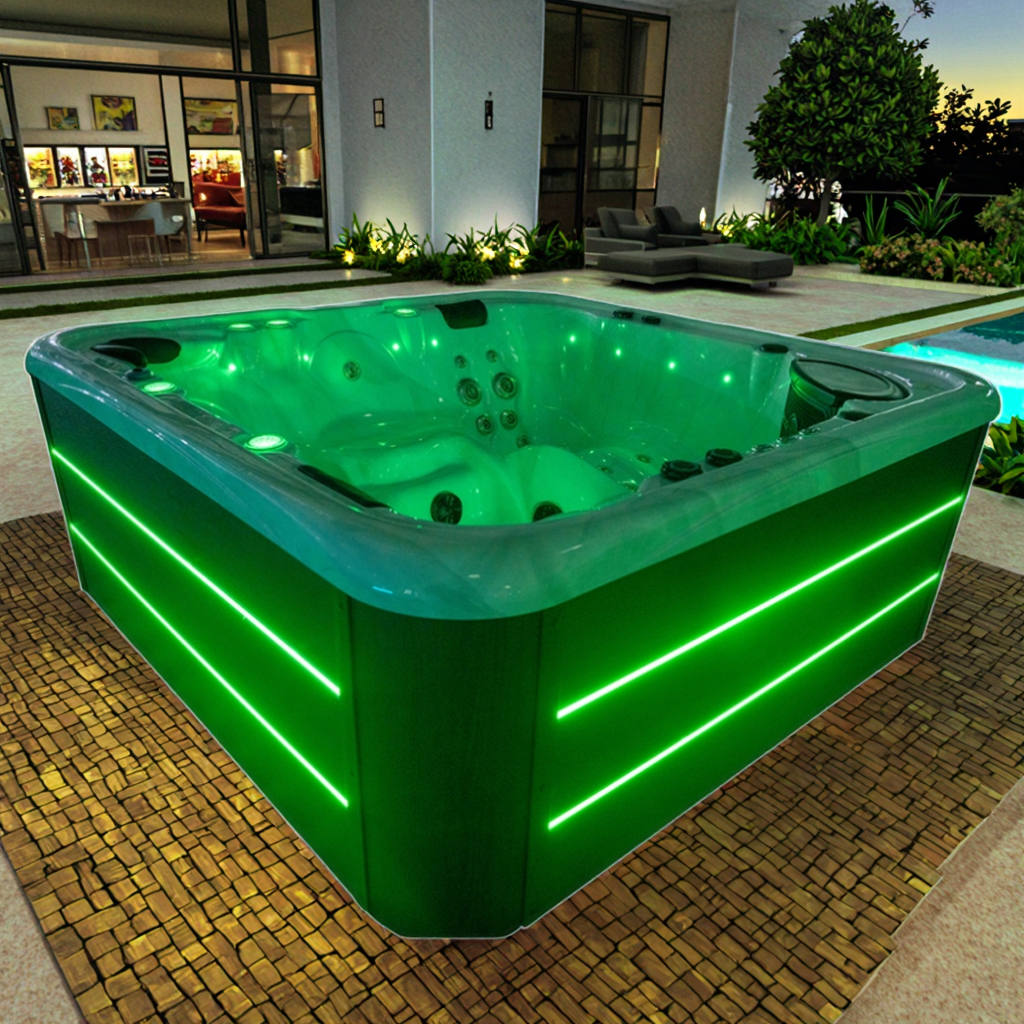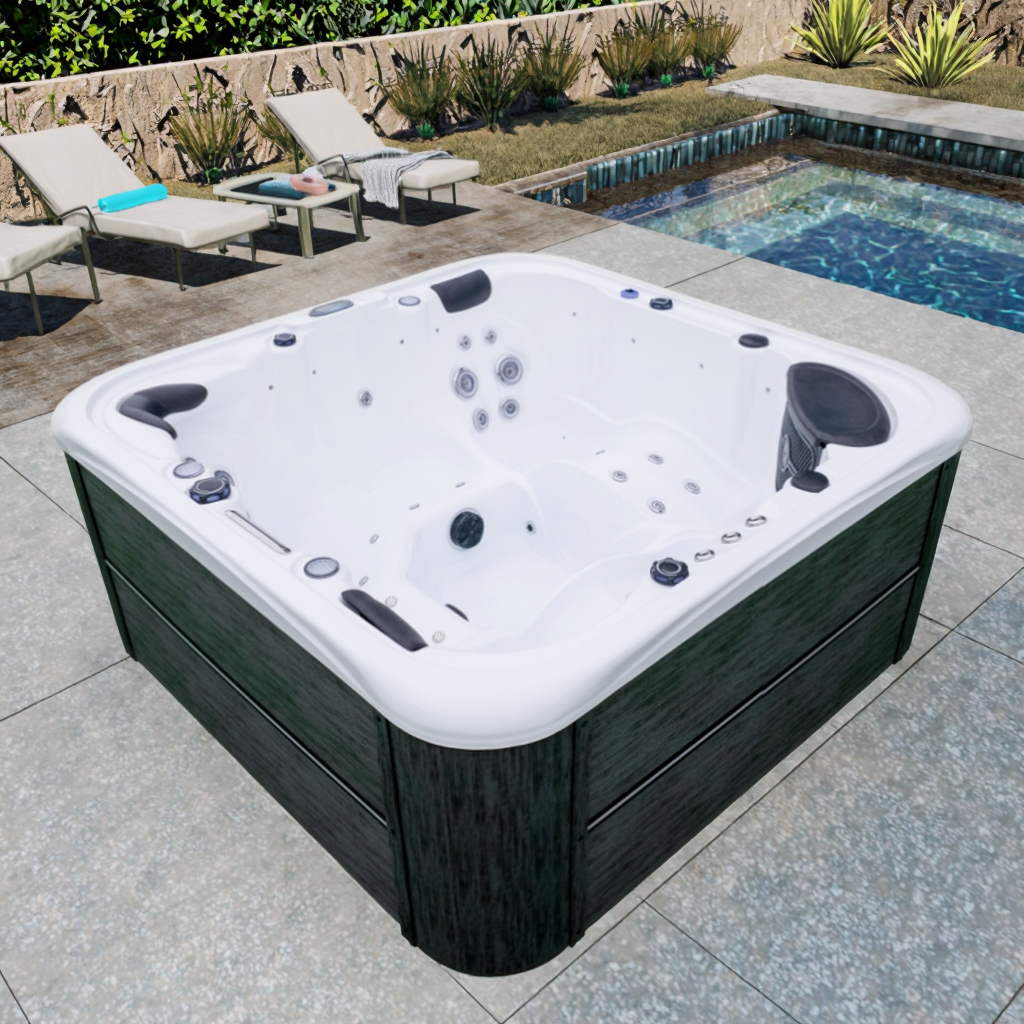
Why does the acrylic spa bathtub squeak?
2025-08-07 15:30Acrylic spa bathtubs have become one of the common high-end bathroom equipment in modern homes due to their excellent thermal insulation performance, durability, aesthetics and multi-functional spa massage design.
Many users may encounter a confusing problem during use: the acrylic spa bathtub will make a "squeak" or other similar minor abnormal noises when in use or during the cooling process after use.
These sounds often occur when the bathtub is heated, cooled, impacted by water flow or under the action of body weight. Although they usually do not represent serious faults, they may affect the user experience and psychological comfort. This article will comprehensively and deeply analyze the reasons why acrylic spa bathtubs squeak, and combine physical principles with practical operation points to provide scientific, reasonable and professional explanations.

Acrylic spa bathtub: What is the structure?
A typical acrylic spa bathtub includes the following main components:
·Acrylic surface: provides glossy appearance and surface anti-fouling;
·Fiberglass or polyester reinforcement layer: enhances structural strength and anti-deformation;
·Bottom support frame: made of metal, wood or composite materials;
·Massage nozzle system: connected to the main cylinder through pipes, water pumps and nozzles;
·Hot water system and control module: maintain constant temperature and hydrotherapy function;
·Sound insulation/insulation layer: some high-end products use foam filling for heat retention.
Acrylic spa bathtub is essentially a "composite structure". The thermal expansion coefficient, elastic modulus, rigidity and friction characteristics of each layer of material are different. When heat, weight or vibration is applied from the outside, there will be slight movement, deformation and friction between different materials, resulting in a slight "squeak". This mechanism is the core of the answer to "why acrylic spa bathtub squeaks".

Thermal expansion and contraction: causing the slight sound of acrylic spa bathtub
The most common squeak of acrylic spa bathtub comes from the thermal expansion and contraction of materials.
1. The effect of temperature rise on the acrylic spa bathtub
Acrylic (PMMA) is a thermoplastic polymer with a thermal expansion coefficient of about 7×10⁻⁵/K, which is much larger than that of metal and ceramic. When the water in the acrylic spa bathtub is heated to about 40°C, the acrylic surface quickly absorbs heat and expands outward. Since the supporting layer (such as fiberglass) or metal frame below it expands less, the slight displacement between the two materials will produce friction and stress release, thus forming a squeaking sound.
2. The effect of temperature reduction on the acrylic spa bathtub
After using the acrylic spa bathtub, the bathtub temperature gradually drops, and the acrylic layer shrinks accordingly, but the shrinkage rate is faster than other underlying materials or supporting structures, forming "rebound friction" or "stress torsion", which also causes squeaking. This sound is often most obvious within ten minutes after stopping use.
Loose support structure: the bottom of the acrylic spa bathtub makes noises
The bottom support system of the acrylic spa bathtub plays a decisive role in the control of the sound.
1. Uneven support leads to load transfer
If the support points of the bottom frame or filling layer of the bathtub are unevenly arranged, when the weight of the human body is pressed on a certain area during use, the part will sink slightly, causing elastic feedback of the material or reaction stress in other parts, forming a squeaking sound.
2. Friction between metal frame and acrylic
Some acrylic spa bathtubs use steel brackets for support. If the assembly gap is too small or a buffer layer (such as a rubber pad) is not used, the micro-friction between the metal and the plastic will also produce a sharp sound when the thermal expansion and contraction or load changes.
Water pump and injection system: potential noise of acrylic spa bathtub
Although the squeaking sound does not come from the motor or water pump itself, the vibration propagation of the power system is often a catalyst for the resonant sound source.
1. Loose connection pipes for nozzles
Most of the jet system pipes of acrylic spa bathtubs are connected by clips or rubber seals. If a certain section of the joint is loose, there will be slight shaking when the high-pressure water flows. This shaking is transmitted to the acrylic cylinder body, rubbing against the support layer, and will also induce a "squeaking" sound.
2. The vibration of the water pump is transmitted through the bottom plate
When the water pump is working, it will produce low-frequency vibrations. If the bottom plate or bracket is not equipped with a seismic isolation pad, the vibration will easily excite the resonance of the cylinder body, especially the hollow structure part (such as the spa channel) to form a resonance cavity effect, thereby converting the low-frequency vibration into a sharp squeak.

Installation process defects: noise caused by human factors
During the installation process of the acrylic spa bathtub, some non-standard construction methods may also lay hidden dangers for the later squeaking.
1. Overtightening or improperly positioned fixing bolts
If the bolts are overtightened or the force points are asymmetrical when the acrylic spa bathtub is fixed to the ground, local prestress concentration will occur in certain areas of the bathtub. As the thermal expansion and contraction or load changes, elastic stress will be released in these areas, resulting in periodic squeaking.
2. Uneven ground or missing filling layer
The bottom of the acrylic spa bathtub should be paved with concrete, polyurethane foam or a special support layer. If the ground is tilted or the foam is not fully filled, the bottom of the bathtub will be suspended, and the force will be uneven during use, and friction noise is very easy to produce.
Usage habits and frequency: Impact on the structure of the acrylic spa bathtub
The user's usage method will also affect the squeaking of the acrylic spa bathtub, mainly reflected in:
1. Repeated local pressure
Bathing on only one side for a long time can easily cause micro-deformation of the structure in that area, stress concentration at the material joints, and eventually "stress fatigue sound".
2. High-frequency switching hot water system
Frequently starting and stopping the heating equipment will cause the acrylic spa bathtub to frequently experience hot and cold cycles, resulting in violent alternating expansion and contraction of the material, which in turn aggravates structural friction and increases the probability of squeaking.
Other possibilities: Indirect factors of bubbles and micro-vibrations in water
Although not common, bubbles generated in water may also cause certain indirect sound phenomena under certain conditions:
· Cavitation effect: When the acrylic spa bathtub jet is working at a low water level, it may inhale air, forming a bubble bursting sound;
· Micro-vibration amplification: If local resonance occurs when water waves impact the cylinder body, it may "stimulate" abnormal noise somewhere in the bathtub.

How to effectively reduce the squeaking sound of the acrylic spa bathtub?
To reduce the squeaking sound of the acrylic spa bathtub, the system can be optimized from the following aspects:
1. Material compatibility design
· Select structural materials with similar thermal expansion coefficients;
· Add an elastic sound insulation layer (such as butyl rubber, foam) between the acrylic and the supporting structure.
2. Installation and construction specifications
·Level the ground to ensure that the bottom of the bathtub fits perfectly;
·Use rubber gaskets to cushion key connection points;
·Maintain uniform and moderate fixing force to avoid stress concentration.
3. Support structure reinforcement
·Add a foam filling layer to the appropriate area at the bottom of the acrylic spa bathtub;
·Check whether there is a gap or friction point between the metal bracket and the bathtub.
4. Maintenance and repair
·Regularly check whether the connection of the acrylic spa bathtub nozzle pipe is loose;
·Ensure that the vibration of the water pump does not affect the bathtub structure when it is working;
·Avoid frequent use with large temperature differences to improve the stability of the bathtub structure.
Is your factory open for inspection or OEM partnership?
Absolutely. We welcome buyers and partners to visit our 45,000 m² factory in Guangzhou, China. We also offer OEM & ODM services for buyers looking to develop their own spa brands. Collaborate with our expert R&D team and benefit from low-cost, high-efficiency manufacturing. As a professional supplier, we value transparency and long-term business partnerships.
